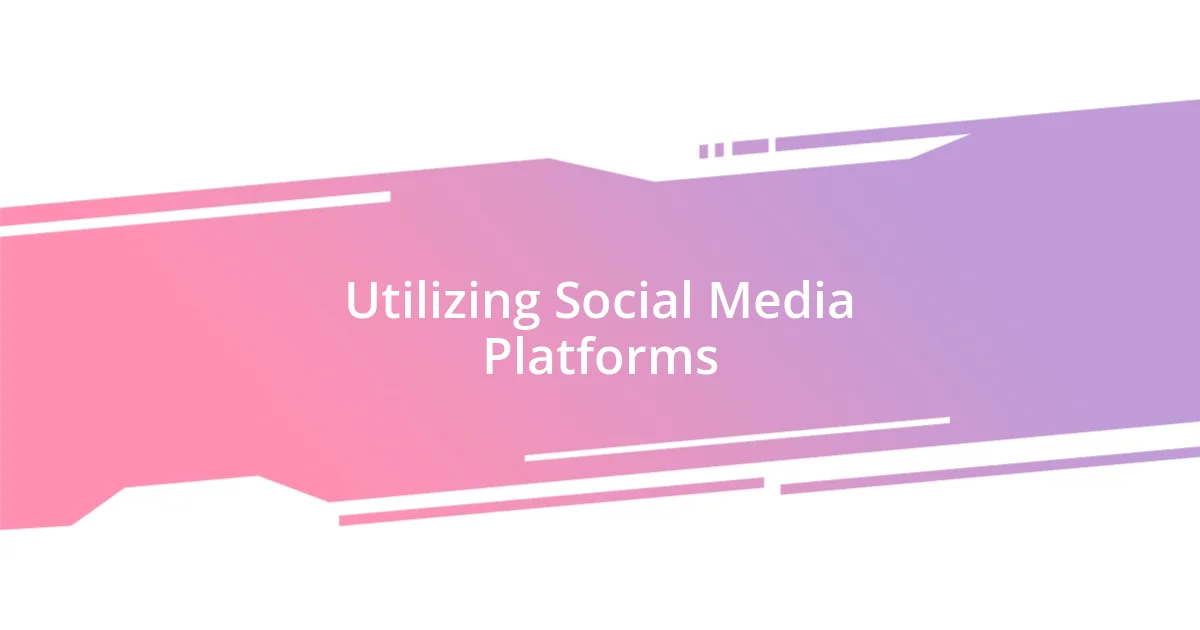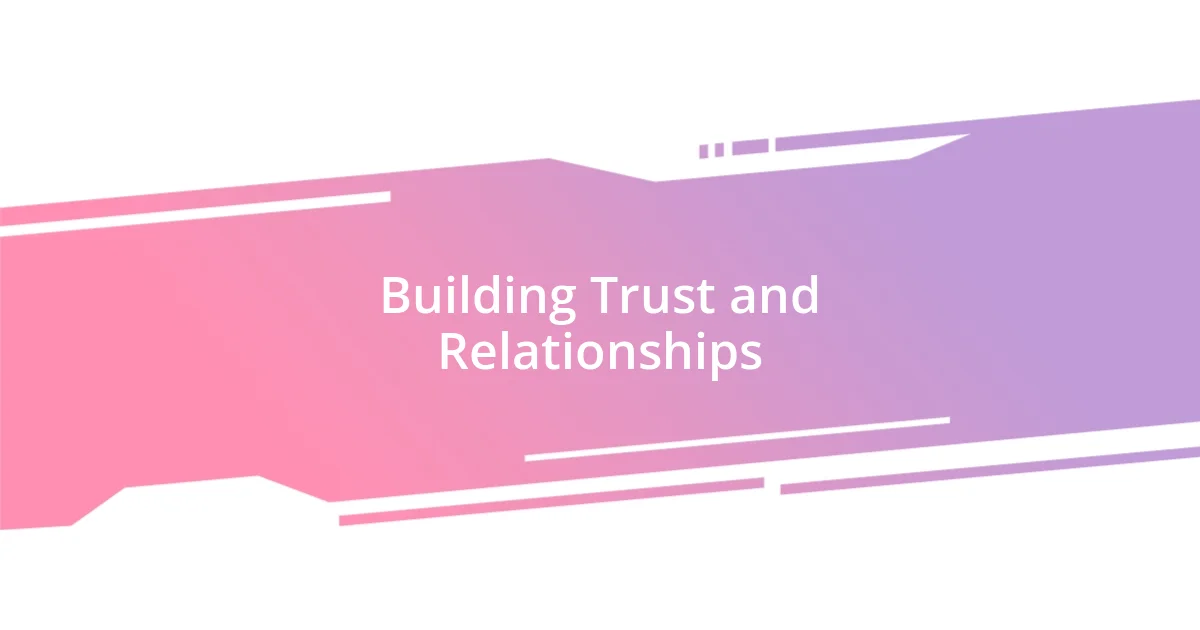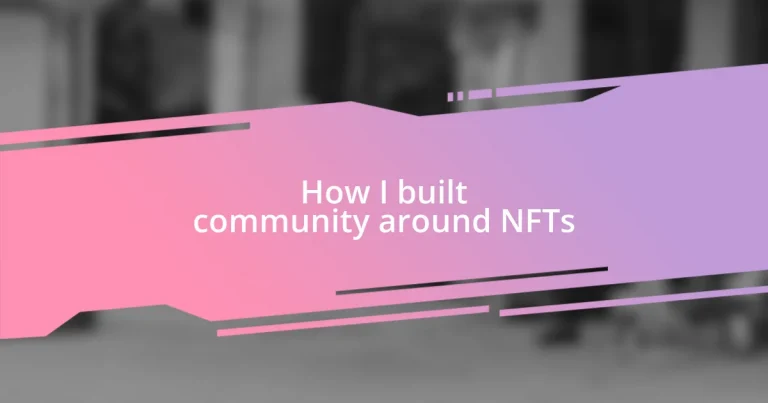Key takeaways:
- NFT communities thrive on collaboration, emotional connections, and shared interests, fostering a sense of belonging among members.
- Effective audience targeting, engaging content creation, and active participation through social media enhance community interactions and growth.
- Building trust through authenticity, personalized communication, and consistent engagement is essential for sustaining long-term relationships within the community.

Understanding NFT Communities
NFT communities are fascinating social ecosystems where individuals come together over shared digital ownership and creativity. I remember the first time I joined an NFT community; it felt like stepping into a vibrant marketplace of ideas, passions, and connections. Have you ever felt that rush of energy when you engage with like-minded individuals?
Within these communities, collaboration thrives. Members often participate in discussions about art, technology, and investment strategies, creating an environment of collective growth. I’ve seen how members rally around projects, providing feedback and support that help artists improve their work. It’s incredible how a simple token can unite people with diverse backgrounds and experiences.
Moreover, emotional connections are at the heart of NFT communities. I’ve witnessed friendships blossom as people share their personal stories around their favorite projects and how those endeavors impacted their lives. Isn’t it interesting how digital assets can foster such deep personal bonds? Engaging with others who share your passion creates a sense of belonging that’s hard to replicate elsewhere.

Identifying Your Target Audience
To effectively identify your target audience in the NFT space, I found it crucial to consider their interests and motivations. I started by engaging with existing communities, where I listened to people express their needs and desires. This firsthand experience revealed invaluable insights about what draws individuals to NFTs—the quest for unique art, investment opportunities, or simply the joy of being part of a digital breakthrough.
Here are some key aspects to keep in mind:
- Demographics: Consider age, location, and professional background to tailor your message.
- Interests: Explore what types of NFTs resonate with potential members—art, music, gaming, or utility.
- Engagement styles: Notice whether your audience prefers deep discussions, casual chats, or educational content.
- Values: Understand the core values that drive your audience, such as innovation, community, or sustainability.
It became evident that by understanding these elements, I could create content that felt personal and relevant right from the start. The more I aligned my approach with my audience’s expectations, the deeper our connections grew.

Creating Engaging Content
Creating captivating content is essential in the NFT space, as it acts as a bridge connecting members with shared interests and passions. From my experience, incorporating storytelling into content can evoke emotions that resonate deeply. For instance, I shared a gripping narrative about the journey of an NFT artist I admire. It not only highlighted their struggles but also their triumphs, sparking conversations and connections among community members. Have you ever noticed how a well-told story can ignite discussions that last well into the night?
Visual elements also play a significant role in engagement. I’ve found that using eye-catching graphics or video snippets enhances the overall content experience. When I launched a series of short videos showcasing behind-the-scenes processes of NFT creation, the feedback was overwhelmingly positive. Members engaged more actively, sharing their thoughts and creative ideas. Isn’t it fascinating how visuals can captivate attention and foster interaction?
Lastly, for content to truly connect, it must be interactive. I experimented with polls and Q&A sessions, which transformed passive consumers into active participants. The thrill of seeing community members’ ideas come to life, whether through collaborative pieces or joint projects, has been incredibly fulfilling. It’s like being part of a live canvas constantly evolving with each member’s input.
| Content Type | Engagement Level |
|---|---|
| Storytelling | High |
| Visuals | Medium |
| Interactivity | Very High |

Utilizing Social Media Platforms
Utilizing social media platforms has been a game changer for building my NFT community. I remember my first Twitter Spaces event—my heart raced as I awaited the start. Hosting a live discussion made me realize how real-time interaction could transform passive followers into active participants. It wasn’t just about sharing information; it felt like hosting a lively dinner party where everyone has something to contribute.
On Instagram, I discovered the power of visually appealing stories and reels. One day, I posted a behind-the-scenes look at my NFT creation process and was surprised by the flood of messages and comments that followed. People were genuinely curious about the techniques I used, and it sparked a delightful dialogue. Have you ever experienced that moment when your audience’s curiosity opens up new avenues for connection?
Moreover, I found that engaging with different platforms allowed me to reach diverse demographics. For example, while LinkedIn attracted professionals interested in the business side of NFTs, Discord became a hub for artists and creators to collaborate. Through these interactions, I learned that a multi-platform approach not only maintains engagement but also strengthens relationships. Isn’t it interesting how one community can thrive by adapting to various social environments?

Leveraging Community Events
Leveraging community events has been instrumental in deepening connections within my NFT space. I recall hosting my first virtual art showcase, where artists presented their work live. The excitement in the virtual room was palpable, and seeing their expressions when receiving instant feedback was unforgettable. It’s moments like these that make you realize how much impact real-time interaction can have—isn’t it thrilling to witness creativity unfold right before your eyes?
I quickly learned that themed events resonate powerfully with community members. For instance, I organized a “Retro NFT Night,” where participants created pieces inspired by nostalgic pop culture. The vibe was electric as people shared their interpretations and bounced ideas off one another. It felt less like an event and more like a celebration of shared interests. Have you ever been in a room where everyone’s energy feeds off each other? It’s a unique experience that fosters unity among creators.
Moreover, follow-up discussions never fail to enhance the community spirit. After a panel discussion with industry experts, we initiated a post-event chat that lasted for hours. Participants felt empowered to share their insights, and I could see the friendships blossoming between members. Reflecting on moments like these, do you think the connections forged in these discussions can turn into lifelong collaborations? I certainly believe they can, and that’s what keeps the community alive and thriving.

Building Trust and Relationships
Building trust within my NFT community has always been about authenticity and open communication. There have been times when I’ve shared my journey, complete with challenges and setbacks. I recall a moment when I posted about a project that didn’t go as planned, fully exposing my disappointments. The response was overwhelmingly supportive, and it struck me how vulnerability could transform relationships. Have you ever found that sharing your lows can bring others closer?
When I think about relationships, I remember engaging one-on-one with my community members during casual chats. It was over a cup of coffee, virtually of course, where I learned about their stories and aspirations. Those conversations revealed so much about their motivations, and it helped me to create tailored content that truly resonated with them. It’s fascinating how investing time in individual connections can foster deeper bonds—don’t you think that personalized attention goes a long way in building trust?
I’ve also found consistency to be crucial in establishing reliability. Whether it’s posting updates or sharing insights on new trends, being present regularly has helped solidify my role within the community. A memorable example is when I committed to a weekly Q&A session. Each time, I could feel the excitement of community members as they prepared their questions. This routine created anticipation and a sense of belonging, reinforcing the idea that we’re in this together. Can you imagine how this type of commitment not only builds trust but also cultivates loyalty? It’s an energizing cycle I’m proud to be a part of.

Sustaining Community Growth
Sustaining community growth means constantly nurturing those bonds. I remember hosting an impromptu “Feedback Friday” session, where members were encouraged to share their projects and ideas. The supportive atmosphere turned nervous participants into confident creators sharing their passions. Isn’t it amazing how just a safe space for feedback can ignite enthusiasm and foster long-lasting engagement?
Additionally, the introduction of gamification has proven to be a game changer. I once initiated a friendly competition where community members could earn rewards for their contributions, whether it’s art submissions or marketing efforts. Watching everyone rally for a common goal was exhilarating. Have you ever seen how a little friendly competition can transform a group dynamic? The camaraderie it built not only sustained participation; it deepened friendships, making the community even more vibrant.
Lastly, maintaining open lines of communication is vital. After every event, I make it a point to gather feedback to evaluate what resonated with the community. One time, I implemented an anonymous suggestion box, allowing even the shyest members to voice their ideas. The overwhelming response not only refined our future events but also made everyone feel valued. Isn’t it rewarding to know that when people feel heard, they’re more likely to invest in the community? Ultimately, it’s these practices that create a thriving ecosystem for everyone involved.














